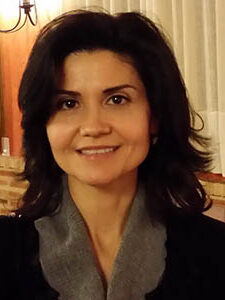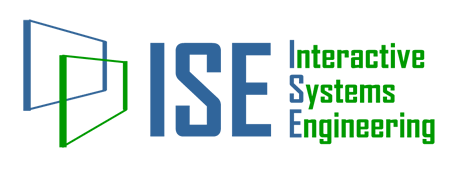Innovaciones tecnológicas para mejorar la experiencia interactiva de los sistemas software aplicados en terapias de rehabilitación y técnicas de evaluación cognitiva
04/01/2023 – 03/31/2025
P.I: Jose A. Gallud
Funded by: Universidad de Castilla-La Mancha

Abstract
The main objective of this project is to develop technological innovations to enhance the interactive experience in software systems applied to improving rehabilitation, stimulation, and medical evaluation techniques. The improvement of the interactive experience is realized through the development of multiexperience environments. Multiexperience Development Platforms (MXDP) are considered the next step in the evolution of user interfaces, where the user interacts with their ecosystem of devices in a seamless and natural manner. In these environments, interaction occurs through natural capabilities, such as touch, movement, gestures, etc., making the interaction more intuitive and natural, as it is not limited to a mouse and keyboard, as is the case in traditional graphical interfaces. The project is described based on three elements: the problem to be solved, the proposed solution, and the team responsible for its execution.
The problem to be addressed is situated in the field of health. Professionals in rehabilitation and stimulation, as well as in the evaluation of neurological damage, face the challenge of integrating different technologies into their therapies and must manage a heterogeneous ecosystem of multiple screens and devices, complicating the activities of healthcare professionals and patients. Proper integration of technologies in these two health fields will provide users with much more natural and flexible interactive systems than currently available, thereby reducing the technological gap often created by new technologies.
The solution includes advancements in the following areas: first, contributing to the development of MXDP platforms as a natural evolution of distributable/distributed user interfaces (DUI, DeUI), enabling users to interact with a heterogeneous ecosystem of multiple screens as if it were a single device; second, designing new natural interaction mechanisms that involve the following technologies: tangible user interfaces, affective computing, enriched with gamification mechanisms and intelligent assistance systems; third, developing interactive systems applying the aforementioned interaction mechanisms using the previously defined MXDP architectures; and finally, evaluating the developed interactive systems with the participation of real users. To achieve these objectives, several lines of action are proposed. The design of MXDP software architectures will be undertaken. Subsequently, we will contribute to advancements in the field of innovative interaction mechanisms. Prototypes applied to the two mentioned health fields will be developed and evaluated in each of these areas.
Main Objective
The main objective of the project is the development and evaluation of new interaction mechanisms integrated in interactive systems based on Natural User Interfaces to improve the interactive experience in the application domain of rehabilitation therapies and cognitive assessment techniques.
To this end, the aim of the project is to define new interaction mechanisms based on Affective Computing, gamification strategies and intelligent assistants to develop innovative interactive systems for their application in these two health-related fields: the rehabilitation and stimulation field, both physical and cognitive, and cognitive assessment techniques, to address the specific needs of different therapies and improve their results.
The use of different interaction devices for the development of these systems makes it necessary to advance in the field of multiplatform and multiexperience development and the integration of multiple devices to support the new interaction mechanisms proposed.
To achieve the objective in a satisfactory manner, the systems to be developed must not only be technically correct, but they must also guarantee a highly positive user experience. For this purpose, we aim to evaluate the quality in use and the user experience of the proposed solutions. These solutions must meet the current criteria in terms of usability, quality in use and user experience, both from the perspective of professionals and patients.
Specific Goals
OBJ-1
Design and development of new software architectures and technological infrastructures to support multiexperience and multi-platform cloud-based environments.

OBJ-2
Design and development of interaction mechanisms based on Natural User Interfaces improved with Affective Computing techniques, Gamification Strategies and Intelligent Assistants to improve the interactive experience in the application of rehabilitation and cognitive assessment techniques.

OBJ-3
Definition and development of interactive systems integrating the new interaction mechanisms defined in OBJ-2 and supported by the architectures and technologies defined in OBJ-1.

OBJ-4
Project coordination and management, as well as dissemination of results.
Members

Jose A. Gallud

Maria D. Lozano

Victor M. Ruiz Penichet

Ricardo Tesoriero Pszytula

Gabriel Sebastian Rivera
